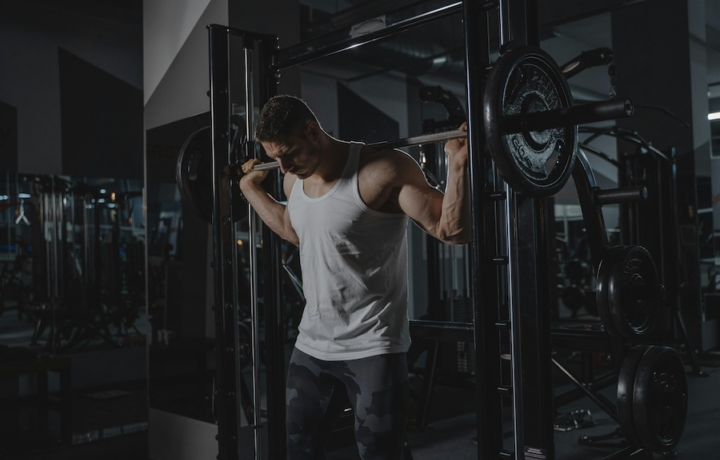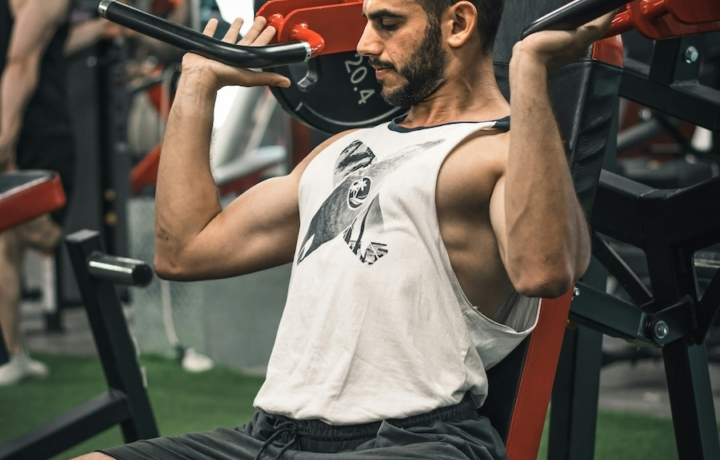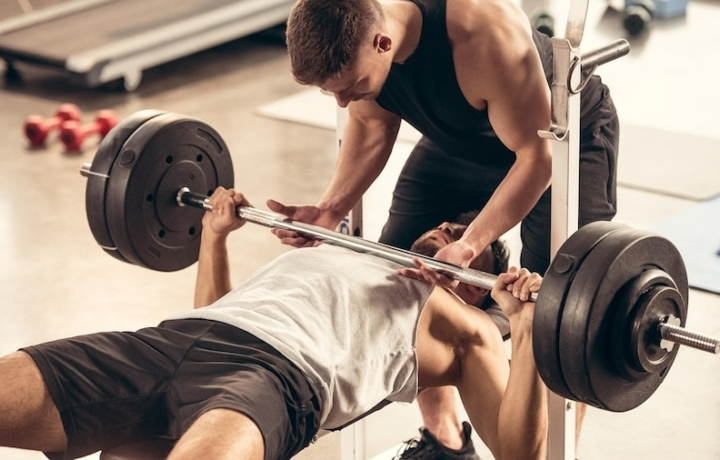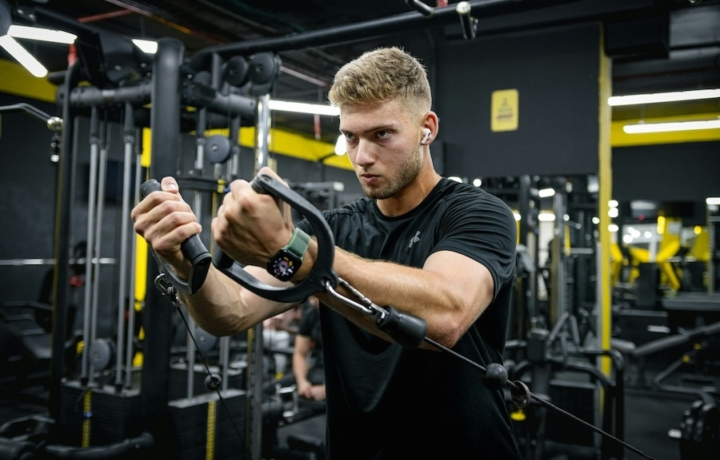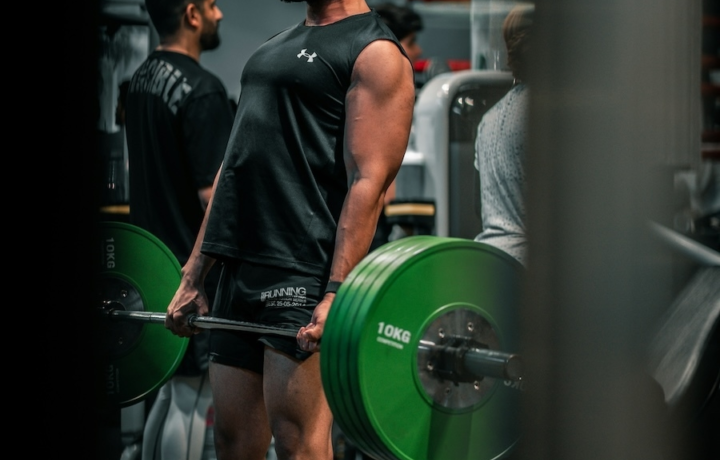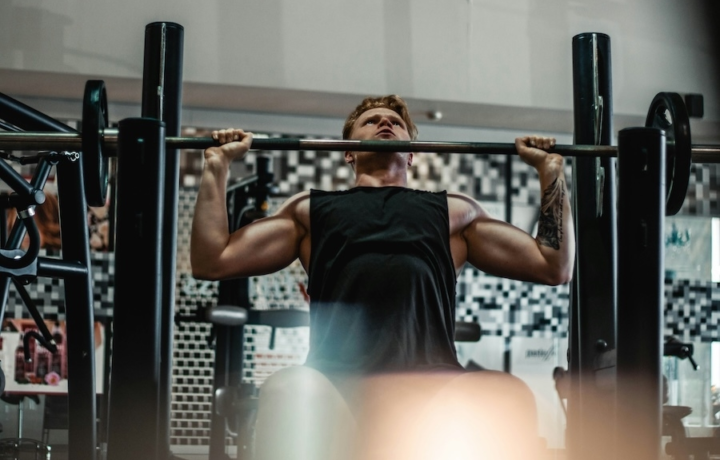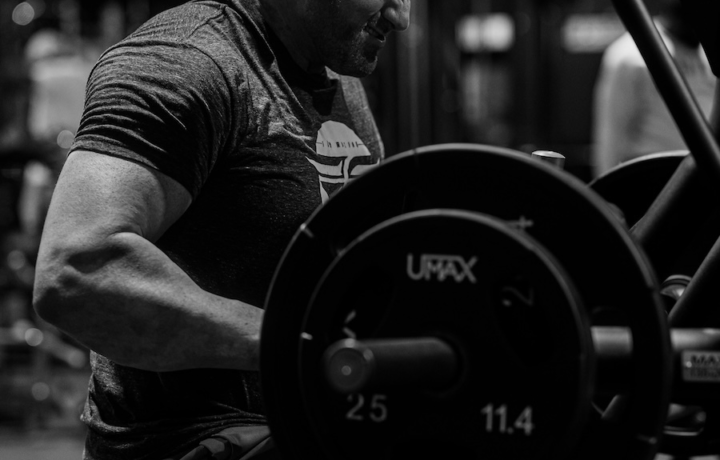Exercise
Barbell Incline Bench Press

Barbell Incline Bench Press
Calculate your one rep max
How to Perform
- Set the bench to a 30-45 degree incline and secure your feet flat on the floor with your glutes firmly planted on the bench.
- Position yourself on the bench with your eyes directly under the barbell, then grasp the bar with a grip slightly wider than shoulder-width apart and palms facing forward.
- Unrack the bar by straightening your arms and position it over your upper chest area, keeping your wrists straight and locked.
- Take a deep breath in, brace your core, and lower the bar in a controlled manner to your upper chest near your clavicles while keeping your elbows at approximately a 45-degree angle to your torso.
- Allow your elbows to bend until the bar lightly touches your upper chest, maintaining tension throughout your pecs and keeping your shoulder blades retracted and pressed into the bench.
- Push the bar away from your chest by driving through your upper back and extending your elbows while exhaling forcefully through the sticking point.
- Continue pressing until your arms are fully extended but not locked, maintaining the bar path in a slight diagonal line toward your face rather than straight up.
- Complete your desired number of repetitions, maintaining control of the weight throughout, then rack the bar by bringing it forward to the supports.
Important information
- Keep your feet flat on the ground and your lower back in a slight natural arch throughout the entire movement.
- Never bounce the bar off your chest, as this reduces the effectiveness of the exercise and increases injury risk.
- If you experience shoulder pain, try adjusting your grip width or decreasing the incline angle of the bench.
- Maintain consistent breathing patterns by inhaling during the lowering phase and exhaling during the pressing phase.
1 Rep Max Calculator
Estimate your one-rep max for Barbell Incline Bench Press

Barbell Incline Bench Press
Calculate your one rep max
Exercise Details
Primary Muscles
Muscle Groups
Mechanic
Risk Areas
1 Rep Max Calculator
Estimate your one-rep max for Barbell Incline Bench Press
Built for progress
Take the guesswork out of training
Create personalized AI-powered workout plans that evolve with you. Train smarter, track every rep and keep moving forward, one workout at a time.






The Barbell Incline Bench Press stands as a cornerstone compound movement for developing impressive upper body strength and musculature. This intermediate-level exercise primarily targets the upper pectorals while significantly engaging the anterior deltoids (front shoulders) and triceps as supporting muscle groups. The angled position—typically set between 30 to 45 degrees—shifts emphasis to the upper chest region, creating a balanced development that flat bench pressing alone cannot achieve.
Athletes across bodybuilding and powerlifting disciplines incorporate this movement for distinct but complementary purposes. Bodybuilders value the incline press for its ability to sculpt a well-defined chest with full upper pectoral development, preventing the drooping appearance that can result from overdeveloping the lower chest. Powerlifters, while focusing more on flat bench for competition, utilize the incline variation to strengthen supporting muscles that contribute to their overall pressing power and performance.
The beauty of the incline barbell press lies in its versatility for strength development. Progressive overload is particularly effective with this movement, allowing lifters to continuously challenge their upper body by incrementally increasing resistance. This steady progression stimulates not just muscle growth but also reinforces the neural pathways responsible for strength expression. Many strength enthusiasts find that improvements in incline press performance correlate with enhanced overall pressing capability.
From a physiological perspective, the exercise creates optimal tension through the clavicular fibers of the pectoral muscles while maintaining substantial recruitment of the sternal fibers. This comprehensive activation pattern, combined with significant triceps engagement, makes it an efficient use of training time for those seeking both aesthetic and functional improvements to their upper body.
When programmed correctly—typically for 3-4 sets of 6-12 repetitions depending on specific goals—the incline barbell bench press delivers substantial returns on investment, making it a worthy addition to any serious strength or physique-focused regimen.
FAQ - Barbell Incline Bench Press
The barbell incline bench press primarily targets the upper portion of your pectoral muscles (clavicular head), while also engaging your anterior deltoids (front shoulders) and triceps as supporting muscle groups. The angled position shifts emphasis away from the lower chest that flat bench targets.
The optimal incline angle is typically between 30-45 degrees. Setting the bench too flat won't adequately target upper pecs, while too steep (above 45 degrees) shifts the emphasis excessively to the shoulders rather than the chest.
Prevent shoulder pain by maintaining proper form: keep your shoulder blades retracted and down, don't flare your elbows excessively (keep them at about 45-60 degrees from your torso), and avoid lowering the bar too high on your chest. Consider using a slightly narrower grip if pain persists.
For optimal results, incorporate incline bench press 1-2 times weekly, allowing 48-72 hours between sessions for muscle recovery. Advanced lifters might perform it more frequently within proper programming, while beginners should master flat bench mechanics before progressing to incline variations.
The most common mistakes include rounding your lower back, rotating your hips instead of keeping them square, rushing through the movement, and not hinging properly at the hips. Focus on maintaining a neutral spine, moving with control, and keeping your standing knee slightly soft rather than locked.




